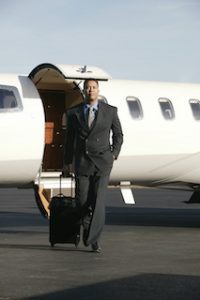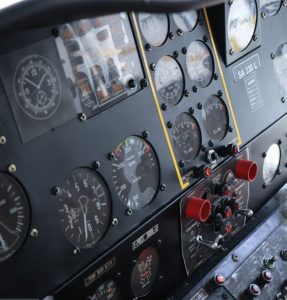Tailor Your Airplane Renters Insurance Policy
 When it comes to flying, having the right insurance coverage is crucial for both safety and peace of mind. For those who rent airplanes, airplane renters insurance serves as a protective measure against various risks associated with flying. However, not all insurance policies are created equal. Tailoring your airplane renters insurance to fit your specific needs can help ensure that you are adequately protected while avoiding unnecessary costs. This comprehensive guide will explore the nuances of airplane renters insurance, the factors to consider, and how to customise your coverage effectively.
When it comes to flying, having the right insurance coverage is crucial for both safety and peace of mind. For those who rent airplanes, airplane renters insurance serves as a protective measure against various risks associated with flying. However, not all insurance policies are created equal. Tailoring your airplane renters insurance to fit your specific needs can help ensure that you are adequately protected while avoiding unnecessary costs. This comprehensive guide will explore the nuances of airplane renters insurance, the factors to consider, and how to customise your coverage effectively.
Airplane renters insurance
Airplane renters insurance is designed specifically for pilots who do not own the aircraft they fly. This type of insurance typically provides coverage for liability, physical damage to the rented aircraft, and other potential risks associated with flying. Understanding the core components of airplane renters insurance will help you tailor it to your needs.
Key components of airplane renters insurance
- Liability coverage: This protects you against claims made by third parties for bodily injury or property damage that you may cause while operating the rented aircraft. Liability coverage is a legal requirement in many jurisdictions and is essential for protecting your financial interests.
- Physical damage coverage: This aspect covers the costs associated with damage to the rented aircraft itself. This can include damage from accidents, theft, or vandalism. Understanding the extent of this coverage is vital for ensuring that you won’t face significant out-of-pocket expenses in the event of an incident.
- Medical payments coverage: Many policies include medical payments coverage, which helps pay for medical expenses for you and your passengers if injuries occur during an accident.
- Loss of use coverage: This compensates the aircraft owner for lost rental income if the aircraft is damaged and cannot be rented out while being repaired.
- Uninsured/Underinsured motorist coverage: This is particularly important if you’re involved in an accident with another pilot who lacks adequate insurance. It provides additional protection in such scenarios.
Factors to consider when tailoring your insurance
To effectively tailor your airplane renters insurance, you need to consider various factors that can influence your coverage requirements. Here are some key aspects to evaluate:
- Your flying experience: Your level of flying experience significantly impacts your insurance needs. If you are a novice pilot, you may need more comprehensive coverage to mitigate the risks associated with inexperience. On the other hand, seasoned pilots may be able to opt for higher deductibles or lower coverage limits, depending on their comfort level and financial situation.
- Type of aircraft rented: Different aircraft come with varying risk levels. High-performance or complex aircraft generally have higher rental rates and may require additional coverage compared to standard single-engine planes. If you plan to fly specialised aircraft, ensure that your policy reflects the unique risks involved.
- Frequency of rental: Consider how often you rent airplanes. If you fly frequently, it may be more economical to purchase an annual policy rather than short-term coverage for each rental. Regular flying may also allow you to qualify for discounts based on your flying hours.
- Personal financial situation: Your financial situation will influence how much risk you are willing to take on. Assess your budget and determine how much you can afford to pay in premiums versus potential out-of-pocket costs in the event of an accident. This assessment will guide you in selecting appropriate deductibles and coverage limits.
- Type of operations: The type of operations you intend to conduct while renting the aircraft can also dictate your insurance needs. If you plan to engage in aerobatic flying, flights over water, or other specialised operations, your insurance may need to be adjusted to cover these activities.
- Legal requirements: Research the legal requirements for insurance coverage in your area. Some states or countries have minimum liability coverage requirements for pilots. Ensure that your policy meets or exceeds these legal obligations to avoid penalties.
Steps to tailor your airplane renters insurance
Once you have assessed your specific needs, follow these steps to tailor your airplane renters insurance effectively:
Step 1: Research insurance providers
Begin by researching various insurance providers that specialize in aviation insurance. Look for companies with strong reputations and positive customer reviews. Understanding the types of coverage they offer and their claim processes will help you make an informed decision.
Step 2: Compare policies
Gather quotes from multiple insurance providers and compare their policies side by side. Pay attention to coverage limits, exclusions, and additional features. Look for policies that offer the best balance of coverage and cost to suit your needs.
Step 3: Consult an aviation insurance agent
An aviation insurance agent can provide valuable insights into tailoring your policy. They can help you navigate the complexities of airplane renters insurance and suggest coverage options based on your specific flying habits and requirements. Don’t hesitate to ask questions to clarify any doubts.
Step 4: Evaluate coverage limits
Carefully evaluate the coverage limits offered in each policy. Ensure that your liability coverage is adequate to protect your financial interests in the event of a claim. Many experts recommend having liability coverage that exceeds the minimum legal requirements to safeguard against potential lawsuits.
Step 5: Determine deductibles
Decide on the deductible amounts you are comfortable with for both liability and physical damage coverage. A higher deductible may lower your premium but will require you to pay more out-of-pocket in case of an accident. Choose a deductible that aligns with your financial situation and risk tolerance.
Step 6: Assess additional coverage options
Evaluate whether you need additional coverage options such as medical payments, loss of use, or uninsured motorist coverage. Depending on your flying habits and concerns, these options may add value to your policy and provide additional peace of mind.
Step 7: Review policy exclusions
Thoroughly review the exclusions in each policy to understand what is not covered. Common exclusions may include certain types of flying activities or operating aircraft under specific conditions. Knowing these exclusions will help you avoid unexpected gaps in coverage.
Step 8: Reassess annually
Your insurance needs may change over time as you gain more experience or alter your flying habits. It’s essential to reassess your policy annually to ensure that it continues to meet your needs. Consider updating your coverage if you start flying different aircraft, change your flying frequency, or face new risks.
Common misconceptions about airplane renters insurance
Understanding common misconceptions can help you make better-informed decisions about airplane renters insurance. Here are a few myths to be aware of:
- Renters insurance is optional: While some pilots may believe that renters insurance is optional, many aircraft rental companies require proof of insurance before you can rent their planes. Additionally, flying without insurance poses significant financial risks.
- All policies are the same: Not all airplane renters insurance policies offer the same coverage. Policies can vary widely in terms of limits, exclusions, and additional benefits. Always review the specifics of each policy to ensure it aligns with your needs.
- Personal auto insurance covers rental aircraft: Many pilots mistakenly assume their personal auto insurance will cover rental aircraft. However, auto insurance typically does not extend to aviation. It’s crucial to obtain specialized airplane renters insurance for adequate coverage.
- Renters insurance is expensive: While some pilots may fear that airplane renters insurance is prohibitively expensive, this isn’t always the case. By comparing quotes and tailoring your coverage, you can find affordable options that fit your budget.
Safe flying
Tailoring your airplane renters insurance to meet your specific needs is an essential step for any pilot. By understanding the components of renters insurance, assessing your flying habits, and evaluating your personal circumstances, you can create a policy that provides the necessary coverage without overspending.
Researching providers, comparing policies, and consulting with experts can significantly enhance your ability to find the right insurance. As you gain experience and your flying needs evolve, don’t forget to reassess your coverage regularly to ensure it remains aligned with your circumstances.
By taking the time to tailor your airplane renters insurance effectively, you will enjoy your flying experiences with confidence, knowing that you are protected against the unexpected.










